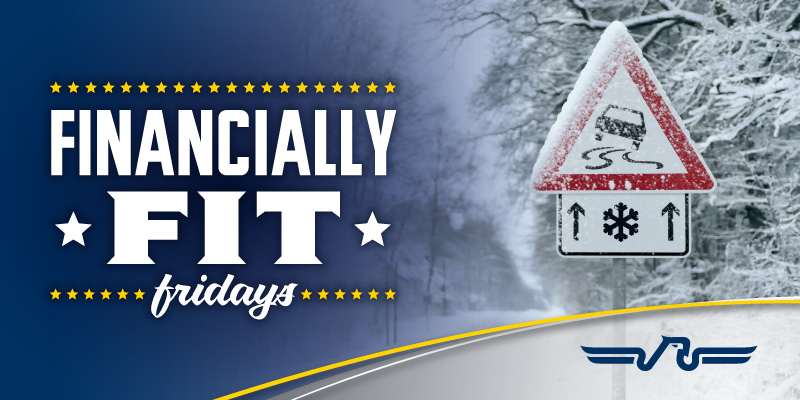(Safely) Dashing Through the Snow
As soon as snow starts to fall, it seems people suddenly forget how to drive in a reasonable manner. So, we have pointers for avoiding costly accidents in the winter.
Proper Preparation
Check the weather and your route before a trip. Give yourself plenty of time so you can drive slowly and arrive safely. Tell others an estimated time of arrival. That way, if you do get stuck, people will know where to look.
Make sure your tires are properly inflated and that they have sufficient tread to handle icy roads. Cold weather can reduce pressure and increase the risk of blowouts. Keep your gas tank at least half full—running out of fuel in the middle of a blizzard is a miserable experience. On a related note, keep your phone’s battery full in case you need to call for help.
Stock your vehicle with winter weather basics such as a snow scraper, jumper cables, mobile charger, and blankets. Clear off your headlights and keep them on so everyone can see you coming. And make sure your windshield wipers are working correctly so you can see others coming.
Acceptable Acceleration
Everything you do in a car—stopping, starting, turning—takes a little longer in the snow. Move at a moderate, steady pace. Don’t rely on cruise control when the streets are slippery, wet and icy. Keep your eyes on the road & your hands on the wheel.
Also, just because the posted speed limit is 55 miles per hour doesn’t mean you should go that fast. In fact, you can be ticketed for driving the limit if conditions are deemed unsafe. Drive slowly enough that you can retain control and move with the flow of traffic.
Don’t punch the gas pedal when you start out or begin ascending a hill. Gradually applying pressure is the best way to avoid spinning your wheels or skidding off the road. If you drift, take your foot off the accelerator and let your car slow down until you get back on track.
Beneficial Braking
Stopping is one of the most dangerous parts of driving in the snow. In fact, if you can avoid coming to a complete halt, you’ll maintain your inertia and have less chance of getting stuck. Allow plenty of room when approaching a stoplight or an intersection, then decelerate naturally. If you’re behind another commuter, give yourself eight to 10 seconds instead of the usual three or four.
Become familiar with brake functions in both wet and dry conditions. Most modern vehicles have anti-lock features, but slamming on the brakes will almost certainly cause skidding. And don’t think you’re invulnerable just because of four-wheel or all-wheel drive—this won’t help when you hit a patch of black ice.
During the winter months, drive slow, smart & safe. You’ll save some money and your stress levels will decrease dramatically.

